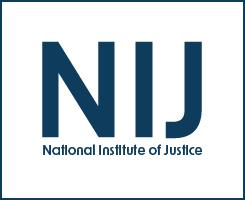Crime scene analysis
Verification of Protein Biomarker Specificity for the Identification of Biological Stains by Quadrupole Time-of-Flight Mass Spectrometry
DNA Solves Property Crimes (But Are We Ready for That?)
Next-Generation Sequencing of the Bacterial 16S rRNA Gene for Forensic Soil Comparison: A Feasibility Study
Sex Determination Based on Raman Spectroscopy of Saliva Traces for Forensic Purposes
The Evidence for Very Small Particles
Identification of Individual Red Blood Cells by Raman Microspectroscopy for Forensic Purposes: In Search of a Limit of Detection
Panoramic Imaging Technology Widens Crime Scene View
Study Surveys 3D Crime Scene Scanning Devices
Highly Sensitive Detection of Blood by Surface Enhanced Raman Scattering
Exploring the Role of Contextual Information in Bloodstain Pattern Analysis: A Qualitative Approach
Rapid Species-level Identification of Salvias by Chemometric Processing of Ambient Ionisation Mass Spectrometry-derived Chemical Profiles
Solving Property Crimes With DNA
Terrestrial LiDAR Scanning (TLS) Working Group for Criminal Justice Applications, First Meeting Report
National Institute of Justice and Purdue University: Advancing 3D Imaging for Footwear and Tire Impressions
Shooting Distance Determination: Identifying Variables Affecting Lead Density on a Target
Success Story: Enabling Forensic Field Testing With Paper Microfluidic Devices
Finding the Region of Origin of Blood Spatters in Complex Situations: Novel Physics-Based Methods and Tools
Human Decomposition: Effect of Indoor Versus Outdoor Decomposition on the Microbiome of Human Cadavers and Implications for Future Forensic Research
Nanobiosensor Arrays for On-Site Multiplexed Detection of Protein Markers to Identify Forensically Relevant Body Fluids
Wrongful Convictions: The Latest Scientific Research & Implications for Law Enforcement
What does science tell us about case factors that can lead to a wrongful conviction? Dr. Jon Gould of American University will discuss the findings of the first large-scale empirical study that has identified ten statistically significant factors that distinguish a wrongful conviction from a "near miss." (A "near miss" is a case in which an innocent defendant was acquitted or had charges dismissed before trial). Following Dr. Gould's presentation, Mr. John R.
See the YouTube Terms of Service and Google Privacy Policy


